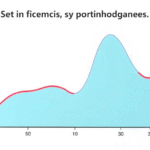Signs You’re Losing Fat but Not Weight
When you’re working hard to improve your body composition, it can be frustrating if the scale doesn’t seem to move. You might wonder, “Am I losing fat but not weight?” Here are some signs that indicate you are indeed shedding fat, even if the numbers on the scale aren’t budging.
Improved Measurements
One of the first signs that you’re losing fat is a change in your body measurements. You may notice:
- Reduced waist circumference
- Looser fitting clothes
- Changes in thigh or arm measurements
Even if the scale shows no difference, losing inches shows you’re losing fat. Tracking your measurements can give you a clearer picture of your progress.
Enhanced Muscle Definition
Another sign you might be losing fat is a more toned appearance. As you lose fat, your muscles can become more visible, particularly if you’re engaging in strength training. You may notice:
- Definition in your arms, legs, or abs
- Increased vascularity (more visible veins)
- Stronger lifts and improved performance in the gym
Changes in Energy Levels
Fat loss can also lead to increased energy levels, particularly if your workouts are more productive. You may experience:
- Greater endurance and strength
- Less fatigue during daily activities
This boost in energy is often a result of improved nutrition and exercise habits associated with fat loss.
Improved Mood and Mental Clarity
As your body becomes healthier, your mental state can improve too. Signs you are feeling better may include:
- Increased motivation to exercise
- Better focus and clarity in daily tasks
- Enhanced mood and reduced stress levels
Skin Changes
Some people notice that their skin looks better as they lose fat. Healthy skin can be a sign of improved diet and hydration. You might see:
- Healthier complexion
- Reduction in acne or blemishes
- Stronger hair and nails
Utilizing Body Fat Percentage Measurements
| Body Fat Percentage | Men | Women |
|---|---|---|
| Essential Fat | 2-5% | 10-13% |
| Athletes | 6-13% | 14-20% |
| Fitness | 14-17% | 21-24% |
| Average | 18-24% | 25-31% |
| Obese | 25% and above | 32% and above |
Using methods such as calipers, bioelectrical impedance, or DEXA scans can help you determine if your body fat percentage is decreasing, even when your weight remains the same.
Building Muscle Mass
If you’re working out consistently, you may be building lean muscle while losing fat. Muscle is denser than fat, which means it can take up less space but weigh more. Signs of muscle gain include:
- Increased strength in lifts
- Progress in workout performance
- Feeling firmer in specific areas
Remember, muscle weighs more than fat, so gains in muscle can offset fat losses on the scale.
Regular Physical Activity
Engaging in regular workouts can lead to fat loss even when the scale doesn’t reflect it. If you notice:
- Improved athletic performance
- Greater flexibility and mobility
- Consistent adherence to your exercise routine
This could signal that you’re losing fat rather than just losing weight.
To learn more about effective fat loss strategies, you can visit Healthline or Bodybuilding.com. These resources provide comprehensive guides on nutrition and exercise tailored for fat loss.
It’s essential to look beyond the scale. Focus on overall health and changes in your body. By recognizing the signs of fat loss, you can stay motivated and continue on your journey to better health.
Understanding Body Composition Changes
When you embark on a weight loss journey, it’s common to focus on the number on the scale. However, that number doesn’t always tell the full story. Understanding body composition changes is key to grasping healthy weight loss. You can lose fat without seeing a significant change in your overall weight. This phenomenon can be confusing, but recognizing the signs can help you stay motivated and on track.
Body composition refers to the percentages of fat, bone, water, and muscle in your body. Rather than fixating solely on weight, tracking your body composition can provide a clearer picture of your health. Here are some signs that indicate you may be losing fat even if the scale isn’t moving much.
1. Clothing Fits Differently
One of the most noticeable signs of fat loss is how your clothes feel. If your favorite jeans are feeling looser around the waist, that’s a strong indicator that you are losing fat. This happens because fat is less dense than muscle. So while you may weigh the same, your body could have lost fat and gained muscle, which affects how clothing fits.
2. Measurements Show Changes
Using a tape measure to track your body measurements can provide valuable information:
- Measure your waist, hips, chest, arms, and thighs.
- Keep a record of these measurements weekly or bi-weekly.
- Look for reductions in circled areas, particularly the waist and hips.
Even if the scale shows little or no change, a decrease in inches can indicate that you are losing fat.
3. Increased Energy Levels
As you lose fat and improve your fitness, you may notice a boost in your energy levels. Regular physical activity and a better diet can enhance your overall wellness, making you feel more energetic and less fatigued. This is a positive sign of improved body composition.
4. Enhanced Workout Performance
Another sign of losing fat while maintaining weight is improved performance during workouts. You might find that you can lift heavier weights, run longer distances, or complete more reps. These advancements often reflect increased muscle mass and reduced fat, contributing to better overall body composition.
5. Improved Recovery Time
If you find that you’re recovering faster after workouts, your body is likely becoming more efficient. This improved recovery can result from having more muscle mass and less fat, as your body adapts to the demands of your exercise routine.
6. Lower Body Fat Percentage
While your scale weight may not budge, having a lower body fat percentage is a crucial indicator of progress. You can measure your body fat percentage using various methods, including:
- Skinfold calipers
- Bod Pod
- Bioelectrical impedance analysis (BIA) scales
Regularly checking your body fat percentage can give you more substantial insights into your fat loss journey.
The Importance of Nutrition
No matter how much you exercise, nutrition plays a critical role in body composition changes. Eating a balanced diet rich in whole foods, proteins, and healthy fats can help you lose fat.
Here are some nutritional tips:
- Focus on whole, minimally processed foods.
- Prioritize protein to preserve muscle mass.
- Limit added sugars and refined carbs.
Track Your Progress
Tracking your progress helps you understand body composition changes better. Log your workouts, nutrition, and body measurements regularly. Consider using apps or journals to record your data. This way, you can identify patterns and trends over time.
Your journey toward better body composition can be fulfilling, especially when you understand these signs of fat loss. Remember that changes in body composition often take time. Patience and perseverance are vital as you work toward your goals.
For more in-depth information on body composition and effective weight loss strategies, you might find these resources helpful: NASM and Precision Nutrition.
The Role of Muscle Gain in Weight Management
When you embark on a weight management journey, you often focus on the numbers on the scale. However, it’s important to understand that weight is not the only indicator of health and fitness. Muscle gain plays a significant role in weight management, impacting your body composition and overall health.
Building muscle is beneficial for enhancing your metabolism. Muscles are metabolically active tissues. This means they burn calories even when you’re resting. The more muscle you have, the more calories your body will require to maintain itself. This can be especially helpful if you’re aiming to lose fat while preserving or gaining muscle. By integrating strength training into your routine, you can increase lean muscle mass, which aids in burning calories efficiently.
Importance of Muscle in Weight Management
Gaining muscle not only helps with fat loss but also improves your overall body function. Here are key roles muscle gain plays in effective weight management:
- Increased Basal Metabolic Rate (BMR): A higher muscle mass increases your BMR, allowing you to burn more calories throughout the day.
- Improved Body Composition: Building muscle while losing fat leads to a more toned and defined appearance, even if the scale doesn’t change significantly.
- Enhanced Strength and Endurance: More muscle means better performance in physical activities, making you more likely to stick to your exercise regimen.
- Weight Maintenance: After weight loss, increased muscle mass helps prevent regaining weight as it boosts metabolism.
Signs You’re Gaining Muscle While Losing Fat
As you pursue weight management, it’s essential to watch for signs of muscle gain. Noticing these changes can keep you motivated and focused on your goals:
- Clothes Fit Differently: You may find that your clothes fit better or become looser in certain areas, suggesting that you’re losing fat even if the scale doesn’t move.
- Increased Strength: If you’re lifting heavier weights or performing more repetitions in strength training, you’re likely building muscle.
- Enhanced Endurance: Improvements in stamina and endurance during workouts indicate muscle gain as your body becomes more efficient.
- Body Measurements Change: Taking measurements of your waist, hips, and other areas can reveal fat loss even if your weight stays the same.
- Visual Changes: Increased muscle definition, particularly in the arms, legs, and abdomen, can indicate that muscle gain is occurring alongside fat loss.
Muscle Gain into Your Weight Management Plan
To effectively incorporate muscle gain into your weight management journey, consider the following strategies:
- Strength Training: Aim for at least two to three days of strength training each week that targets all major muscle groups.
- Balanced Diet: Ensure you are consuming adequate protein to support muscle repair and growth. Foods such as lean meats, legumes, and dairy are excellent sources.
- Stay Hydrated: Proper hydration supports muscle performance and recovery.
- Rest and Recovery: Allow muscles time to recover, as recovery is vital for muscle growth and overall health.
Resources for Further Reading
To deepen your understanding of how muscle gain influences weight management, explore the following resources:
- NCBI – Role of Muscle Mass in Metabolism
- ACE Fitness – Strength Training for Weight Management
- Bodybuilding.com – Importance of Weight Training
Understanding the role of muscle gain is vital for effective weight management. By focusing on building muscle, not only do you enhance your body’s ability to lose fat, but you also foster greater overall health and fitness. Remember, the scale isn’t the only measure of your success—muscle gain can lead to improvements in your life in numerous ways.
Why Scale Weight Can Be Misleading
When it comes to tracking your fitness journey, many people instinctively turn to the scale. It seems like a straightforward approach, right? However, the number on that scale can often be misleading. The scale doesn’t just measure fat loss; it reflects many factors that can create confusion about your actual progress.
One significant reason the scale can mislead you is due to water retention. Your body is composed of about 60% water, and fluctuations in water retention can impact your overall weight. Factors such as dietary changes, sodium intake, hormonal fluctuations, and even stress can cause your body to retain more water, leading to temporary weight increases. You might be eating healthy and exercising regularly, yet the scale shows a gain instead of a loss.
Additionally, it’s crucial to consider muscle gain. When you engage in resistance training or other forms of exercise, you may be building muscle mass. Muscle is denser than fat, so even while you are losing fat, the scale may not show significant weight loss. Instead, your body composition is changing; you look leaner and feel healthier, but the scale might not showcase that progress. As you lose fat and gain muscle, it’s important to remember that these changes can disguise the fat loss on the scale.
Your daily habits can also affect scale readings. Here are several factors to consider:
- Time of Day: Your weight can vary throughout the day based on your meals and hydration levels. Weighing yourself at different times can yield different numbers.
- Clothing: The weight of your clothes can add a few pounds to your reading. Always weigh yourself in similar conditions for consistency.
- Menstrual Cycle: Women can experience fluctuations in weight due to hormonal changes, particularly during their menstrual cycle.
- Digestive Contents: The amount of food and waste in your digestive system can impact your weight significantly.
When focusing solely on the number on the scale, you might overlook other important indicators of progress. Consider using body measurements, such as the circumference of your waist, hips, arms, and legs. These measurements can provide insight into body composition changes that the scale doesn’t reflect. Using the Progress Pictures method, you can visually track your body’s transformation over time. Sometimes, a picture can tell more than numbers on a scale.
| Measurement Method | What It Indicates |
|---|---|
| Scale Weight | Overall body weight, which includes fat, muscle, water, and bone. |
| Body Measurements | Changes in fat distribution and body composition. |
| Body Fat Percentage | Specific assessment of fat loss versus muscle gain. |
| Progress Photos | Visual representation of body changes over time. |
Another aspect to consider is the role of nutrition in your weight loss journey. If you’re consuming more calories than you burn, you won’t see a drop in weight, even if your fat is decreasing. On the flip side, if you significantly reduce your calories, your body might react by slowing down your metabolism, making weight loss stagnate. This is why a balanced approach, focusing on nutrition rather than just calorie counting, is crucial. You can find useful resources on nutrition and balanced dieting at sites like Eat Right.
In order to accurately track your fitness progress, it’s vital to adopt a holistic approach. The number on the scale may fluctuate for a variety of reasons unrelated to fat loss. It’s essential to be patient and focus on other signs of progress such as energy levels, fitness performance, and how your clothes fit. A comprehensive approach will help keep you motivated and focused on long-term goals rather than being disheartened by a number on a scale.
Consult with professionals when needed. Fitness coaches, nutritionists, and healthcare providers can guide you with personalized advice tailored to your unique situation. Check out trustworthy resources like Nutrition.gov for guidance on maintaining a healthy lifestyle.
Importance of Monitoring Measurements and How to Do It
Monitoring your measurements can be a game-changer when it comes to achieving your health and fitness goals. While many people focus solely on weight, tracking various body measurements provides a more comprehensive view of your progress, revealing changes that might not be reflected on the scale. Understanding this is pivotal for staying motivated and on track. Here are some key aspects to consider in the importance of monitoring measurements and effective methods to do so.
Why Monitoring Measurements Matters
Your weight alone doesn’t tell the full story of your health. Here’s why measuring other parameters is crucial:
- Body Composition Insight: Monitoring measurements like waist, hip, chest, and arm circumference helps gauge changes in muscle and fat composition.
- Motivation Boost: Sometimes, the scale may not budge, but tight clothes fitting better or visible muscle gain can motivate you to keep going.
- Goal Setting: Measurements help set specific, realistic goals tailored to your body rather than general weight-loss goals.
- Tracking Progress: Keeping a log of your measurements can create a tangible record of your achievements, even when scale weight fluctuates.
Effective Methods for Monitoring Measurements
To get the most out of your measurement tracking, consider these practical steps:
Choose the Right Measurements
Identify which body parts are most relevant to your fitness goals. Here are some common areas to focus on:
- Waist circumference
- Hip measurement
- Chest measurement
- Thigh measurement
- Arm circumference
- Body fat percentage (if possible)
Use Consistent Tools and Techniques
When measuring, consistency is key. Follow these guidelines:
- Use a flexible measuring tape that can easily conform to your body contours.
- Measure at the same time of day, preferably in the morning before you eat or drink.
- Wear minimal clothing to ensure accuracy.
- Always measure in the same location on your body, taking note of where you placed the tape for uniformity.
Track and Record Your Measurements
Keeping a detailed log of your measurements helps you visualize changes over time. Consider these methods:
| Date | Waist (inches) | Hip (inches) | Chest (inches) | Weight (lbs) |
|---|---|---|---|---|
| 01/01/2023 | 32 | 40 | 36 | 150 |
| 02/01/2023 | 31 | 39 | 36.5 | 149 |
| 03/01/2023 | 30 | 38.5 | 36 | 148 |
Set Specific Measurement Goals
Creating realistic and specific goals will keep you engaged. Instead of focusing solely on weight loss, consider setting goals like:
- Reducing your waist measurement by 2 inches over the next month.
- Increasing muscle circumference in your arms and legs.
- Tracking non-scale victories like improved endurance.
Tools to Monitor Your Progress
There are many tools available to help you with tracking measurements effectively:
- MyFitnessPal – A great app to log food and track body measurements.
- Fitbit – Wearable technology that can help track your physical activity and body metrics.
- Strava – Ideal for tracking your workouts and measuring endurance progress.
By regularly monitoring your measurements, you’ll gain a clearer understanding of your body’s progress, which can be more motivating and rewarding than focusing solely on weight. Remember, the journey to health is unique to everyone. Celebrate your body’s changes and stay focused on your personal goals!
Nutritional Strategies to Support Fat Loss
When you’re on a journey to lose fat, understanding nutritional strategies is crucial. You may have noticed that the number on the scale doesn’t always reflect your fat loss progress. This can be due to several factors, but focusing on your nutrition can help steer you in the right direction. Below are some effective strategies that can support fat loss while ensuring you maintain overall health.
Focus on Whole Foods
Whole foods provide essential nutrients and help keep you feeling full without excessive calories. fruits, vegetables, whole grains, lean proteins, and healthy fats into your meals can aid in fat loss. Aim for:
- Fresh fruits and vegetables
- Brown rice or quinoa instead of white rice
- Lean meats like chicken or turkey
- Healthy fats from avocados, nuts, or olive oil
Control Portion Sizes
Portion control is key in managing calorie intake. Use smaller plates or bowls to help reduce your portions subconsciously. Here’s a simple guide to help you visualize appropriate serving sizes:
| Food Type | Serving Size |
|---|---|
| Cooked Vegetables | 1 cup |
| Whole Grains | ½ cup |
| Protein (Meat/Fish) | The size of your palm |
| Fats (Nuts/Seeds) | A small handful |
Incorporate Lean Proteins
Protein is a critical nutrient for muscle repair and growth. It also increases satiety, which means you’ll feel fuller for longer. Consider adding these sources of lean protein to your diet:
- Chicken breast
- Fish like salmon or tuna
- Legumes such as lentils and chickpeas
- Tofu or tempeh for plant-based options
Stay Hydrated
Water plays a vital role in weight loss. Being well-hydrated can reduce hunger and increase calorie burning. Aim to drink at least 8 cups of water per day. Here are some tips to help you stay hydrated:
- Start your day with a glass of water.
- Keep a water bottle handy throughout the day.
- Replace sugary drinks with water or herbal teas.
Understand Macronutrients
Balancing macronutrients—carbohydrates, proteins, and fats—is essential for an effective fat loss plan. A well-rounded approach includes:
- Carbohydrates: 45-65% of total daily calories; focus on whole grains and fiber-rich fruits.
- Proteins: 10-35% of total daily calories; prioritize sources like poultry, fish, and legumes.
- Fats: 20-35% of total daily calories; opt for avocados, nuts, and olive oil.
Track Your Intake
Keeping a food diary can help you stay accountable and mindful of what you eat. There are several apps available for tracking meals and exercise. Being aware of your intake helps you make better choices. Consider using apps like MyFitnessPal or Cronometer to track your nutrition and caloric intake effectively.
Limit Processed Foods
Processed foods can be high in sugars and unhealthy fats, which may impede your fat loss goals. Instead, try to limit your intake of items like:
- Fast food
- Sugary snacks and pastries
- Processed meats
For more information on nutrition and fat loss strategies, consider checking out resources from the Academy of Nutrition and Dietetics, which offers reliable advice on diet and health.
Remember, everyone’s body responds differently to dietary changes. It’s essential to find a nutritional strategy that works for you and consult with a healthcare professional if needed. Embrace these strategies, and take one step closer to achieving your fat loss goals!
The Impact of Water Retention on Weight Loss Progress
Water retention, also known as edema, is a common issue that can significantly affect weight loss progress. Many people find themselves frustrated when they see the scale remain unchanged or even increase, despite their efforts to eat healthy and exercise. Understanding the impact of water retention on your weight goals can help you navigate your weight loss journey more effectively.
One reason individuals experience water retention is dietary factors. Consuming high amounts of sodium can lead to excess water being stored in the body. Foods like processed snacks, canned soups, and fast food often contain high salt levels, contributing to temporary weight fluctuations. For those monitoring their weight, it’s crucial to pay attention to salt intake. Reducing sodium can help diminish water retention and may lead to more accurate weight measurements.
Another factor that influences water retention is carbohydrate intake. When you consume carbs, your body stores them as glycogen, which binds to water. For every gram of glycogen, the body retains approximately 3 to 4 grams of water. Consequently, fluctuations in carbohydrate intake can lead to noticeable weight changes on the scale. If you are following a low-carb diet or adjust your carb consumption, you might experience a sudden drop in weight due to loss of water weight, even if you have not lost fat.
Hormonal changes can also play a significant role in water retention, especially for women. Factors such as menstrual cycles can lead to fluctuations in hormones, which may cause bloating and temporary weight gain. Being aware of these patterns can help you better understand your body and its natural rhythms.
Despite these factors, there are clear signs indicating that you might be losing fat even if the scale does not reflect that change. Some common signs include:
- Increased Muscle Definition: You may notice your clothes fitting differently or see more muscle tone even if the scale hasn’t changed.
- Improved Energy Levels: A boost in energy and stamina during workouts often indicates positive health changes.
- Better Mood: Weight loss can lead to improved mental health and well-being, even if your weight remains the same.
- Measurements Matter: Taking body measurements (waist, hips, arms) can provide a better picture of your progress than relying solely on the scale.
Staying informed about hydration is also essential for managing water retention. Drinking enough water can actually help reduce the fluid your body holds onto. When you are dehydrated, your body may retain more water as a defense mechanism. Therefore, aiming to drink at least eight glasses of water a day can not only keep you hydrated but also assist in reducing retention.
If you suspect that your weight loss seems stalled due to water retention, consider some potential strategies:
| Strategies | Benefits |
|---|---|
| Monitor Sodium Intake | Reduces bloating and water retention |
| Stay Hydrated | Encourages less retention and boosts metabolism |
| Regular Exercise | Promotes circulation and helps manage weight |
| Track Menstrual Cycle | Aids in understanding natural weight fluctuations |
Whole foods like fruits and vegetables can also combat water retention. Foods rich in potassium, such as bananas and sweet potatoes, can help balance sodium levels in your body. Additionally, natural diuretics like cucumber and watermelon can support the body in reducing water weight.
Having realistic expectations is critical. Remember that the scale isn’t the only indicator of progress. Focus on how your body feels, how your clothes fit, and improvements in your workouts. Addressing water retention proactively can allow you to move forward on your journey without letting the scale dictate your progress. By understanding these nuances, you can maintain a positive outlook and stay motivated along your journey to better health.
For more resources on water retention and weight loss strategies, consider visiting Healthline or WebMD.
Key Takeaway:
Understanding your body’s changes during a fat loss journey can be a complex process, especially when the scale doesn’t reflect the results you desire. It’s essential to recognize the signs that indicate you’re losing fat but not necessarily weight, as this will help you stay motivated and focused.
One primary sign you’re losing fat but not weight is the way your clothes fit. If you notice that your favorite jeans are fitting better despite the scale remaining nearly the same, this could signify that you are losing fat while gaining muscle. Understanding body composition changes is crucial because fat loss is about gaining muscle and losing fat simultaneously, not just about what the scale shows.
The confusion often stems from the role muscle gain plays in weight management. Muscle is denser than fat, meaning it takes up less space and contributes to a healthier body composition. Therefore, you might weigh the same or even gain weight while your body is actually transforming positively.
Moreover, the scale can be misleading due to fluctuations caused by water retention. Factors such as diet, exercise, and hormonal changes can lead to temporary water weight gain, obscuring your fat loss progress. Monitoring body measurements, such as waist circumference or body fat percentage, can provide a more accurate picture of your progress than scale weight alone.
In terms of nutritional strategies to support fat loss, focusing on a balanced diet rich in whole foods, such as lean proteins, healthy fats, and fiber, can help reduce fat while promoting muscle gain. strength training into your routine can also enhance this effect, leading to a more toned physique.
Ultimately, it’s about looking beyond the number on the scale. By understanding these various factors and keeping track of measurements, you can gain a clearer, more positive view of your fat loss journey. This holistic approach not only promotes physical health but fosters a more sustainable and rewarding path towards your fitness goals. With patience and persistence, you’ll come to appreciate all the signs that showcase your efforts.
Conclusion
Maintaining a healthy body weight is often a complex journey, with many factors influencing your progress. Recognizing the signs that you could be losing fat while the scale remains unchanged is crucial for staying motivated. Changes in body composition, such as gaining muscle while losing fat, play a key role in how your body looks and feels, even if your weight doesn’t shift significantly.
The scale can be a misleading indicator of your progress due to factors like muscle gain and water retention. Instead, focus on how your clothes fit, changes in your body shape, and various measurements to get a clearer picture of fat loss. Tracking your measurements can provide valuable insights and encourage you to stay committed to your goals.
Food choices also play an essential role in effective fat loss. Implementing nutritional strategies that promote healthy eating habits can support your fat loss while minimizing muscle loss. Remember, hydration matters too; fluctuations in water weight can mask your progress on the scale but may not accurately represent your true fat loss.
By embracing these insights and taking a holistic approach, you can better understand your body’s transformation. With patience and consistency, you’ll likely find that you are making strides toward your goals, even if the numbers on the scale don’t reflect that right away. Celebrate every small milestone, and keep your focus on overall health rather than fixating solely on weight. Your journey towards a slimmer, fitter you is just as important as the destination.











